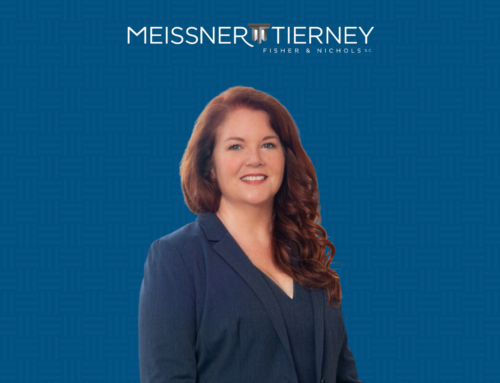Choice of Entity Corner
You may have read an article that one of us wrote eight years ago for the Journal of Passthrough Entities,1 entitled “Code Section 1202 Stock: Fool’s Gold or Worse for Most Taxpayers.”2 For those of you who had the misfortune to miss that article, here is the Cliff Note: The 100% exclusion for gain on the sale of stock of a C corporation at the individual level doesn’t do you much good when the transaction has already been subjected to tax at the corporate level. This made sense when (a) the C-corporation tax rate reached 34% at only $75,000 of taxable income, (b) the tax rate at the individual level for S corporation and other passthrough entity asset sales for owners that “materially participated”3 in the business was only 20% and (c) state income taxes were deductible for both C corporations and individuals. Well, the Tax Cuts and Jobs Act4 changed much of this calculus.
As you no doubt know,5 the TCJA reduced the corporate tax rate to just 21%.6 It also limited the federal deduction at the individual level for state and local income, property and other taxes (“SALT”7) to a maximum of $10,000,8 while leaving the SALT deduction for C corporations intact. The net effect of these changes is to make the initial corporate-level tax on an asset sale by a C corporation roughly equivalent to the owner-level tax on the same transaction by an S corporation or other passthrough entity, especially for the 43 states that impose an income tax.9
In order to do an “apples to apples” comparison, let’s take Wisconsin10 and assume that all gains are eligible for Code Sec. 1231 capital gains treatment. The initial tax for a C corporation would be 27.241%.11 For S corporations and other passthrough entities, the initial tax at the individual level for an owner who is active in the business would be 25.355%.12 We know what you’re going to say: that slightly less than 2% differential fails to take into account the double tax that applies to C corporations; the C corporation shareholders could also be subject to tax again when the proceeds from the sale are distributed.
That’s where the 100% Code Sec. 1202 gain exclusion comes into play.13 If you qualify, it eliminates that second level of tax for federal purposes, and for many states, too.14 Thus, in the best of all possible worlds, your business could earn and retain taxable income at a top federal rate of only 21% and with a SALT deduction, instead of at a top federal rate of 29.6%15 and no SALT deduction. Again using Wisconsin to come up with an “apples to apples” comparison, this is a difference of 27.241%16 versus 37.25%.17 If that retained taxable income is ultimately distributed in a way that qualifies for the Code Sec. 1202 gain exclusion, that 10% differential constitutes permanent savings. If the plan is to retain a significant amount of income over a number of years, that 10% differential might even wipe out or exceed the approximately 2% differential on the ultimate sale of the business. And that is even before taking into account the compliance advantage of not having to coordinate and report corporate income on individual owner returns or having to comply with the S corporation single class of stock, eligible shareholder and other rules.18
So what’s the catch? Actually, there are several. First, there are numerous requirements in order to qualify for the Code Sec. 1202 gain exclusion. Among other things, the stock must satisfy the requirements to be treated as qualified small business stock (“QSBS”).19 To qualify for QSBS treatment, the taxpayer must acquire the stock at original issuance20 from a C corporation that is a “qualified small business,” e.g., one that did not have aggregate gross assets of over $50,000,000 at or before issuance of the stock.21 If these initial requirements are met, there are ongoing qualification issues to consider. For example, the corporation must satisfy an active business requirement whereby at least 80% of its assets22 must be used “in the active conduct of 1 or more qualified trades or businesses” for “substantially all” of the time the taxpayer holds the QSBS.23 This active business requirement, however, is automatically failed where the corporation owns too much of certain types of assets, namely stock or securities in non-subsidiary corporations24 or real property not used in the active conduct of the corporation’s trade or business.25 Care must also be taken so that the corporation does not undertake any prohibited redemption transactions in the period of time surrounding issuance of its stock. For this, a taxpayer’s stock will not be treated as QSBS if the corporation redeems more than a de minimis amount of its stock from the taxpayer or a person related to the taxpayer within two years before or after issuance of that stock.26 Similarly, anytime a corporation issues stock intended to be QSBS, it must ensure that it does not redeem over 5% “of the aggregate value of all of its stock” within one year before or after the date such stock is issued.27 In addition to these and other requirements, there are significant ambiguities present in the statute itself.28 Given the relatively light usage of Code Sec. 1202 over the years,29 there is not much in the way of case law or other guidance to shed light on many of these ambiguities.30
Second, the 10% advantage on retained income only benefits C corporations that earn and retain substantial taxable income. This point has two aspects. Note first that we are talking about retained taxable income, not retained income under generally accepted accounting principles. This is important because the TCJA dramatically liberalized the capital expenditure expensing rules. For example, all taxpayers will be entitled to fully expense “qualified property” under the new bonus depreciation rules for property placed into service before January 1, 2023,31 the dollar limitation and phase-out threshold under Code Sec. 179 were increased by $500,000 each,32 and groups of entities and individuals with less than $25,000,000 of gross receipts will not need to adhere to the stringent UNICAP requirements under Code Sec. 263A.33 That 10% rate differential doesn’t provide any benefit if the corporation is retaining all of its income in order to buy equipment that is fully deductible and that wipes out all of its taxable income. Note also that any need or desire to distribute any substantial portion of entity-level earnings can easily offset that 10% differential. This is because regular dividends do not qualify for Code Sec. 1202 gain exclusion treatment.34 Again, using our Wisconsin “apples to apples” rates, this adds another 22.88%35 tax rate onto all such distributed earnings. Bottom line: This strategy generally only makes sense when the plan is to retain well more than half of the income taxable at the corporate level.
Third, you only qualify for the Code Sec. 1202 gain exclusion if you hold on to the stock for more than five years.36 Moreover, the exclusion is capped at the greater of $10,000,000 or 10 times original basis.37 While these are fairly generous numbers, any gain in excess of these amounts will be subject to a fairly healthy double tax. Again, using the Wisconsin “apples to apples” rates, such excess gain38 would be taxed at a rate of 25.355%.39 Once again, you are faced with a situation where you are balancing a potential tax benefit off against a potential tax detriment.
To summarize, the TCJA upset the whole applecart. What used to be a no-brainer “choice of entity” decision to choose passthrough treatment for the large majority of closely held businesses has turned into a very numbers-intensive exercise40 based on projections and probabilities that will invariably turn out to be wrong. It would probably help to have an outline of the topics you covered at your TCJA “choice of entity” client meeting, just in case.
One last point. Suppose you decide to go with C status. Another impact of the TCJA is that the sale of assets versus sale of stock tax choice has gotten significantly less expensive. Just using a simple example, suppose you are selling a business for $1,000,000 and the entire purchase price will be amortizable over 15 years.41 When the corporate rate was 35%, and applying a discount rate of 5%, the present value of that deduction was approximately $240,000. With the corporate tax rate of 21%, that present value is now only about $145,000. If the ultimate buyer of your business is a C corporation, offering to “buy off” the basis step-up tax benefit at the 15% rate that this implies and negotiating a stock sale could be cheaper than doing an asset sale at the corporate level and paying double tax upon liquidation.42 Again, using the Wisconsin “apples to apples” comparison, the double tax rate would be 27.241%43 plus 22.62%44 for a combined total of almost 50% versus 25.355%.45 This is just something to consider if all your wonderful Code Sec. 1202 analysis doesn’t work out for one reason or another.
One very last point. You should probably also mention to your clients that the law might change.
Endnotes
1 If you are the one, thank you.
2 Thomas J. Nichols, Choice of Entity Corner, 13 J. Passthrough Entities, Jul.-Aug. 2010, 9–14.
3 Reg. §1.1411-5(b)(1)(ii) (incorporating the rules under Code Sec. 469 to determine whether the net investment income tax is applicable); see Code Secs. 1(h)(1)(D); 1231(a)(1).
4 Tax Cuts and Jobs Act (P.L. 115–97). We realize that, as a consequence of the arcane rules of reconciliation in the U.S. Congress, less than perfect bipartisan cooperation and other personal and political defects, the actual title of the legislation is “An Act to provide for reconciliation pursuant to titles II and V of the concurrent resolution on the budget for fiscal year 2018,” but let’s call it the “TCJA” anyway.
5 Given the fact that you are reading this column, we are assuming that you are a tax practitioner and can locate the United States on a map.
6 Code Sec. 11(b).
7 This isn’t good for your heart either.
8 Code Sec. 164(b)(6).
9 We don’t want to shock you, but the District of Columbia, Guam and Puerto Rico also have an income tax.
10 Okay, we practice law in Wisconsin, and so this wasn’t that tough for us to do. Wisconsin’s top corporate and individual rates are 7.9% and 7.65%, respectively, which is within the range of typical. If we had really wanted to make the point, we could have used California where the top corporate and individual rates are 8.84% and 12.3%, respectively.
11 21% + (1–21%) × 7.9% = 27.241%.
12 20% + (1–30%) × 7.65% = 25.355%. As mentioned above, the TCJA virtually eliminated the SALT deduction for high-bracket taxpayers. However, Wisconsin allows a 30% net capital gains deduction. Wis. Stat. §71.05(6)(b)(9).
13 Gain excluded under Code Sec. 1202 should also not be subject to AMT or the net investment income tax. Code Secs. 1202(a)(4)(C); 1411(c)(1)(A)(iii) (including in the definition of “net investment income” only net gain that is “taken into account in computing taxable income”).
14 For example, Illinois, Minnesota and Wisconsin recognize this exclusion, but California does not.
15 37% × (1–20%) = 29.6%. This is assuming that the business fully qualifies for the 20% deduction under Code Sec. 199A.
16 See note 11.
17 29.6% + 7.65% = 37.25%. Wisconsin does not recognize the 20% Code Sec. 199A deduction, and the 30% exclusion applies only to net capital gain (including Code Sec. 1231 gain treated as net capital gain), not all taxable income.
18 Code Sec. 1361(b)(1)(A)-(D); see e.g., Reg. §1.1361-1(l).
19 Code Sec. 1202(b)(2).
20 Code Sec. 1202(c)(1)(B). There are a number of special rules concerning this requirement. See, e.g., Code Secs. 1202(h)(2)(A)-(B) (creating an exception for persons who acquire stock by gift or upon someone’s death); 1202(g) (1)-(3) (allowing certain interest holders in passthrough entities that hold QSBS to benefit from their share of the exclusion). Partnership conversions should generally be okay, too. Under the check-the-box regulations, a partnership that converts to an association is deemed first to contribute all of its assets/ liabilities to the association in exchange for the association’s stock and to then immediately distribute that stock out in complete liquidation to its partners. Reg. §301.7701-1(g) (1). By virtue of Code Sec. 1202(h), any partner receiving otherwise-qualifying QSBS as a result of the partnership’s liquidation would be treated as having acquired it “in the same manner” as the partnership, i.e. at original issuance. Code Sec. 1202(h)(1)-(2), (g).
21 Code Sec. 1202(d)(1)(A)-(B).
22 This includes assets “held as part of the reasonably required working capital needs of a qualified trade or business” and assets “held for investment [that are] … reasonably expected to be used within 2 years to finance research and experimentation in a qualified trade or business.” Code Sec. 1202(e)(6)(A)-(B). Query: What assets are held as part of working capital? Current assets (including receivables and inventories)? Current assets minus current liabilities? Just cash and short-term securities? Cf. Reg. §1.469-2T(c)(3)(ii).
23 A “qualified trade or business” includes any trade or business that is not of a type specified in the statute. Code Sec. 1202(e)(3)(A)-(E). The excluded trades or businesses include all of those excluded for purposes of the Code Sec. 199A deduction, Code Sec. 199A(d)(2)(A), as well as “(B) any banking, insurance, financing, leasing, investing, or similar business, (C) any farming business (including the business of raising or harvesting trees), (D) any business involving the production or extraction of products of a character with respect to which a deduction is allowable under section 613 or 613A, and (E) any business of operating a hotel, motel, restaurant, or similar business.” Code Sec. 1202(e)(3)(B)-(E).
24 Code Sec. 1202(e)(5)(B).
25 Code Sec. 1202(e)(7).
26 Code Sec. 1202(c)(3)(A). Say, for example, A and B, A’s son, both acquire 100 shares of stock in the corporation at original issuance on July 1, 2018, and that the corporation redeems 10 shares of stock from B on June 15, 2020 for $12,000. Assuming that no other person related to A owns stock in that corporation, the redemption of B’s stock nearly two years after issuance would still cause A’s stock to fail to be treated as QSBS, and, upon the sale or exchange of A’s stock, A would be taxed on that gain without the benefit of the Code Sec. 1202 gain exclusion. Code Sec. 1202(c)(3)(A); but cf. Reg. §1.1202–2(a)(2) (ignoring de minimis redemptions unless the “aggregate amount paid for the stock exceeds $10,000 and more than 2 percent of the stock held by the taxpayer and related persons is acquired”).
27 Code Sec. 1202(c)(3)(B). In applying the 5% test, the aggregate value of the corporation’s stock is determined as of the date one year before the issue date. Id. Query: Can a start-up not redeem any of its stock for the first year since it didn’t exist at the time this valuation is determined? What about a partnership that converts into a C corporation?
28 For example, does the Code Sec. 1202 gain exclusion apply in a multi-tiered partnership setting? Looking at the regulation under Code Sec. 1045, it seems likely that it does, but that conclusion is in doubt if you look solely to the terms of Code Sec. 1202(g). Reg. §1.1045-1; Code Sec. 1202(g). Also, what happens where an individual has a carried interest in a partnership that itself holds QSBS? Here, the regulation under Code Sec. 1045 suggests that the Code Sec. 1202 gain exclusion would not apply with respect to that interest. Reg. §1.1045-1(d) (1)-(2) (applying a non-recognition limitation that is calculated in part by reference to a partner’s “smallest percentage interest in partnership capital”).
29 Humility requires us to acknowledge the fact that this may not be entirely due to our coauthor’s article cited above.
30 As you might have gleaned from the second preceding endnote, Code Sec. 1045, the regulations thereunder and case law interpreting that provision are likely to be useful since that Code Sec. applies “[r]ules similar to the rules of subsections (f), (g), (h), (i), (j), and (k) of section 1202.” Code Sec. 1045(b)(5); see J.P. Owen, 103 TCM 1135, Dec. 58,923(M), TC Memo. 2012–21 (holding that where 92% of a business’s assets consisted of cash, the business did not satisfy the active business requirement under Code Sec. 1202 for purposes of determining whether Code Sec. 1045 was applicable). There are a few cases and private letter rulings under Code Sec. 1202. S. Natkunanathan, 99 TCM 1071, Dec. 58,118(M), TC Memo. 2010–15 (holding that the original issue requirement was not satisfied where the taxpayer exercised an option to acquire stock after the qualified small business merged with IBM and the taxpayer received stock in IBM (rather than the qualified small business)); Holmes, 104 TCM 250, Dec. 59,180(M), TC Memo. 2012–251 (holding that no evidence showed that original issue or active business requirements were met); LTR 201436001 (holding that a company that engaged in research and development in the drug industry and developed manufacturing processes was a qualified trade or business despite being associated with the health industry); LTR 201717010 (similar).
31 Code Sec. 168(k)(6)(A)(i).
32 Code Sec. 179(b)(1)-(2).
33 Code Sec. 263A(i)(1) (incorporating the gross receipts test under Code Sec. 448(c)(1)).
34 Partial liquidation distributions should qualify, however, because the Code Sec. 1202 gain exclusion applies to “gain[s] from the sale or exchange of qualified small business stock” and, under Code Sec. 302(b)(4), distributions in redemption of a non-corporate shareholder’s stock that are in partial liquidation of the distributing corporation are treated as in exchange for that stock. Code Sec. 1202(a)(1) (emphasis added); Code Sec. 302(a), (b)(4). So should redemptions treated as such for tax purposes, Code Sec. 302(b)(1)-(5), but watch out for possible QSBS disqualification as a result of those redemptions under the rules described above. See text accompanying notes 26–27 above.
35 (1 – 27.241%) × (20% + 3.8% + 7.65%) = 22.88%. Wisconsin, like most other states, does not provide any exclusion or preferred rate for corporate dividends.
36 Code Sec. 1202(a)(1), (b)(2). Note, however, that Code Sec. 1045 could mitigate this five-year holding period requirement somewhat. That provision generally allows a taxpayer who has held otherwise-qualifying QSBS for longer than six months to defer at least a portion of the gain from the sale of that stock when the proceeds from the sale are used to purchase the stock of another qualified small business within 60 days. Code Sec. 1045(a).
37 Code Sec. 1202(b)(1)(A)-(B).
38 Sec. 1202 also applies special basis provisions for determining how much gain is excluded. If appreciated property was contributed to the corporation in exchange for its stock, the taxpayer’s basis for purposes of determining the Code Sec. 1202 gain exclusion would be no less than the fair market value of the property contributed to the corporation for such stock. Code Sec. 1202(i)(1)(B).
39 See note 12. Remember, Wisconsin allows a 30% long-term capital gain exclusion.
40 One of us is also a certified public accountant.
41 Code Sec. 197(a).
42 We realize that some buyers will insist upon an asset sale for liability and other reasons, but many will be willing to be flexible if they can gain a comfort level through due diligence, escrow arrangements, etc.
43 See note 11.
44 (1 – 27.241%) × [20% + 3.8% + (1 – 30%) × 7.65%] = 22.62%.
45 See note 12.
This article is reprinted with the publisher’s permission from the Journal of Passthrough Entities, a bi-monthly journal published by Wolters Kluwer. Copying or distribution without the publisher’s permission is prohibited. To subscribe to the Journal of Passthrough Entities or other Wolters Kluwer Journals please call 800-449-8114 or visit CCHGroup.com. All views expressed in the articles and columns are those of the author and not necessarily those of Wolters Kluwer or any other person. © CCH Incorporated. All Rights Reserved.
© 2018 CCH Incorporated and its affiliates. All rights reserved. Reprinted with permission from the Journal of Passthrough Entities.






